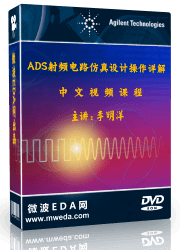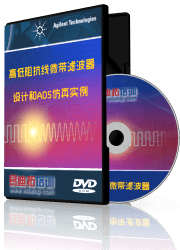- 易迪拓培训,专注于微波、射频、天线设计工程师的培养
Which one is more reliable between HFSS and ADS
Of course it can be measured from manufactured antenna to confirm which simulation is more reliable, but for some condition,the antenna impedance can not be measured directly by general VNA,i.e. one antenna has differential input port.
If you use HFSS correctly, it's pretty accurate. And it is a full 3D solver. ADS, as far as I know, is not a full 3D so my bets are on the HFSS. But again, if you use both tools correctly you'll get accurate results. One can easily make innocent mistake in the sim model and gets bad results. In your case I think you've got fairly good correlation between the two.
Thanks to rfmw.
For an easy example of dipole antenna design,i want to know the exact input impedance,but VNA will not measure the differential impedance of dipole directly,then it's difficult to compare which simulation is more reliable.
i have never used the ADS but HFSS gave me more accurate and good agreement result between the simulated and the measured results.And rfmw said ADS is not a full 3d but hfss is i would say that HFSS is far better than ADS
If you have not used ADS, how can you say that another tool is more accurate? Makes no sense to me.
This is complete nonsense. Momentum uses MoM for planar 3D modelling, HFSS uses FEM volume meshing for arbitrary 3D modelling. Both methods are a complete solution to the 3D EM problem. The difference is that Momentum is specialized on planar geometries and can not do arbitrary 3D objects. However, this has absolutely nothing to with the accuracy of the results. Users who think that HFSS will give more accurate results have been fooled by marketing bullshit.
---------- Post added at 09:53 ---------- Previous post was at 09:40 ----------
100% agreed.
Differences might be caused by different mesh density (set by the user) or different choice of ports (set by the user). For a similar "quality" of the mesh and similar port configuration, results for a planar antenna geometry should be very similar.
Maybe the mesh density is not the same, but i use the default setup for simulation.For ports choice, Lumped port used in HFSS and internal/ref.ground is used in ADS, I think both ports setup are correct for antenna with differential feed, isn't?
I am not a Momentum expert (use Sonnet instead), but there is a chapter "Defining a Differential Port" in the online documentation which described the method and requirements for using differential ports.
Sorry, could u pls. tell me the correct address of your advised document, i found nothing.
I used "internal/ground reference" port type for dipole feeding from some ADS example introduction, isn't right or differential port type must be used? anybody tell me? thanks.
It is in the online help document (Help > Topics and Index) in the chapter Simulation > Electromagnetic > Momentum > Ports in Momentum
and also online:
http://cp.literature.agilent.com/lit..._Momentum.html
Thanks,i'm just reading it.
申明:网友回复良莠不齐,仅供参考。如需专业帮助,请学习易迪拓培训专家讲授的ADS视频培训课程。
上一篇:Relation between Theoretical and Simulation results In ADS
下一篇:6 users in ads simulator
ADS涓枃瑙嗛鍩硅鏁欑▼ | More...
 国内最全面、最专业的Agilent ADS培训课程,可以帮助您从零开始,全面系统学习ADS设计应用【More..】
国内最全面、最专业的Agilent ADS培训课程,可以帮助您从零开始,全面系统学习ADS设计应用【More..】
- Agilent ADS教学培训课程套装
- 两周学会ADS2011、ADS2013视频教程
- ADS2012、ADS2013射频电路设计详解
- ADS高低阻抗线微带滤波器设计培训教程
- ADS混频器仿真分析实例视频培训课程
- ADS Momentum电磁仿真设计视频课程
- ADS射频电路与通信系统设计高级培训
- ADS Layout和电磁仿真设计培训视频
- ADS Workspace and Simulators Training Course
- ADS Circuit Simulation Training Course
- ADS Layout and EM Simulation Training Course
- Agilent ADS 内部原版培训教材合集








